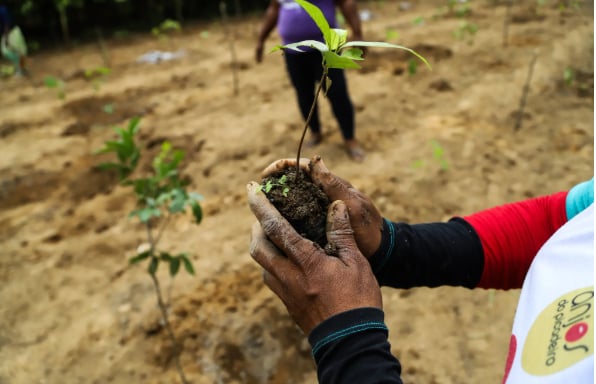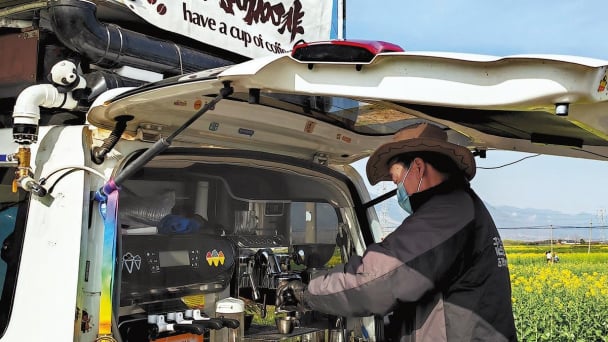May 19, 2025 | 22:13 GMT +7
May 19, 2025 | 22:13 GMT +7
Hotline: 0913.378.918
May 19, 2025 | 22:13 GMT +7
Hotline: 0913.378.918

New trees help to lock away planet-warming carbon. But the choice of trees matters: Nonnative species can also harm biodiversity.
Sometimes, human needs can make problems like climate change and biodiversity collapse seem insurmountable. The world still relies on fossil fuels that are dangerously heating the planet. People need to eat, but agriculture is a top driver of biodiversity loss.
But what if we’re looking at those problems the wrong way? What if we tackled them as a whole, instead of individually?
A landmark assessment, commissioned by 147 countries and made public on Tuesday, offers the most comprehensive answer to date, examining the sometimes dizzying interconnections among biodiversity, climate change, food, water and health.
“Our current approaches to dealing with these crises have tended to be fragmented or siloed,” said Paula Harrison, a co-chair of the assessment and an environmental scientist who focuses on land and water modeling at the UK Center for Ecology & Hydrology, a research organization. “That’s led to inefficiencies and has often been counterproductive.”
For instance, consider a parasitic disease known as schistosomiasis, or bilharzia, which affects more than 200 million people, especially in Africa. Spread by freshwater snails that thrive amid invasive aquatic plants nourished by fertilizer runoff, the disease is typically seen through the lens of the health sector and treated with medication, Dr. Harrison said. But a project in rural Senegal looked at the problem from additional angles. Clearing the invasive plants from bodies of water reduced infection rates in children by 32 percent. After composting, the vegetation can be used as a cheap alternative to cattle feed, increasing food production.
The report, by the Intergovernmental Science-Policy Platform on Biodiversity and Ecosystem Services, an independent panel that advises governments on biodiversity issues, focuses heavily on solutions. It includes scores of potential interventions along with their cascading effects. For example, the authors note that efforts like incorporating prairie strips, areas of native vegetation amid crop rows, or strategically locating trees on farmland can help with biodiversity, food production, human well-being, water quality and climate change all at once.
Not all situations will have multiple wins. Often, negative consequences are unavoidable. But people should be aware of the trade-offs and make them deliberately, from national governments all the way to local communities, the authors said.
“Right now, we don’t take account of a lot of the trade-offs,” said Pamela McElwee, also a co-chair of the assessment and a professor of human ecology at Rutgers University. “And so, they get passed on to somebody else.”
Overlooked costs to biodiversity, climate, water and health from the fossil fuel, agriculture and fisheries sectors were estimated at $10 trillion to $25 trillion per year. Negative health consequences were especially costly, Dr. McElwee said. For instance, she pointed to the nine million people a year who die from air pollution, and the rise in obesity and diabetes because of unhealthy diets that also harm biodiversity and contribute to climate change.
Direct public subsidies that are damaging to biodiversity amount to about $1.7 trillion per year, incentivizing the private sector to invest even more in harmful activities.
Governments approved the report, which joins assessments on global biodiversity loss, invasive species and the use of wild animals. The latest negotiations, held in Windhoek, Namibia, hit tensions between business interests and nature and ran into overtime.
The purpose of such reports is to evaluate and synthesize the sprawling universe of existing and sometimes contradictory research. Governments use the findings to inform their policymaking at home and in global negotiations.
The latest report, three years in the making, had to overcome the very problem it sought to examine: the entrenched silos separating sectors.
“The biodiversity literature is quite separate from the water literature, which is quite separate from the health literature, which is quite separate from the food literature and climate change and so forth,” Dr. McElwee said.
Such divisions were also apparent among the 165 experts who contributed, she said. They had to learn new language and sometimes found themselves outside their comfort zones as they engaged with people and ideas from other fields.
Adding to the urgency of the work is the reality that as these crises worsen, they often amplify one another. Collapses in pollinator numbers and droughts fueled by climate change make it harder to grow food, for example.
But sometimes, when it comes to avoiding unintended consequences, a relatively small pivot can help.
Take tree planting. Trees store carbon, which helps in tackling climate change and could make money for landowners through carbon markets. But people often choose fast-growing commercial species that can have negative effects on biodiversity and water. With native trees instead, the authors said, those negative effects can turn positive.
nytimes

(VAN) Fourth most important food crop in peril as Latin America and Caribbean suffer from slow-onset climate disaster.

(VAN) Shifting market dynamics and the noise around new legislation has propelled Trouw Nutrition’s research around early life nutrition in poultry. Today, it continues to be a key area of research.

(VAN) India is concerned about its food security and the livelihoods of its farmers if more US food imports are allowed.

(VAN) FAO's Director-General emphasises the need to work together to transform agrifood systems.

(VAN) Europe is facing its worst outbreak of foot-and-mouth since the start of the century.

(VAN) The central authorities, in early April, released a 10-year plan for rural vitalization.

(VAN) Viterra marked a significant milestone in its carbon measurement program in Argentina, called Ígaris, reaching 1 million soybean hectares measured.